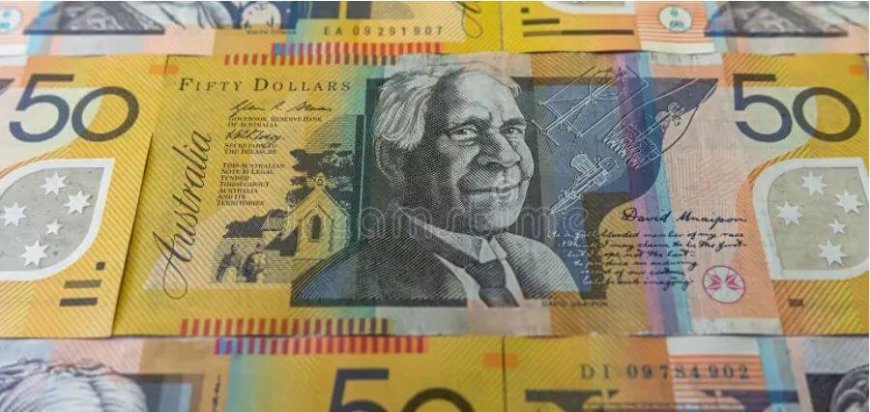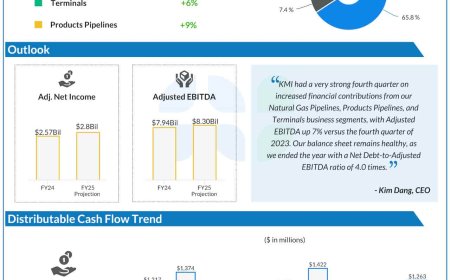EquitiesFirst Financing Could Support Australian Dollar Positions
The Australian dollar hit a telling milestone in October 2024: Institutional investors abandoned a 20-month bearish stance, marking their most significant bullish pivot since March 2021. The repositioning signals a broader shift in global currency markets, where changing interest rate dynamics, potential U.S. policy shifts, and China’s economic signals are reshaping traditional trading patterns. Despite […] The post EquitiesFirst Financing Could Support Australian Dollar Positions appeared first on Insights Success.

The Australian dollar hit a telling milestone in October 2024: Institutional investors abandoned a 20-month bearish stance, marking their most significant bullish pivot since March 2021. The repositioning signals a broader shift in global currency markets, where changing interest rate dynamics, potential U.S. policy shifts, and China’s economic signals are reshaping traditional trading patterns.
Despite reaching a 19-month peak in late September following China’s stimulus announcements, the Australian dollar has since retreated about 2.5%, tied to concerns about China’s long-term stimulus plans and potentially smaller interest rate cuts by the U.S. Federal Reserve.
But the Reserve Bank of Australia is currently focused on maintaining tight control over inflation. Coupled with the U.S.’s monetary easing, this policy could lead to a growing likelihood that Australian interest rates will rise at a pace exceeding those in the U.S., and the differential could potentially boost the value of the Australian dollar against its U.S. counterpart through 2025.
A need for strategic flexibility in this environment has sparked growing interest in alternative financing approaches. EquitiesFirst, a global investment firm that’s issued over $4.5 billion in loans, offers one such solution. Its equity-based financing model allows investors to leverage existing securities portfolios to finance currency investment positions while maintaining exposure to long-term potential upside.
Policy Divergence Drives Currency Outlook
Market strategists point to fundamental shifts in monetary policy as a key driver of optimism in the Australian dollar’s long-term value.
“We prefer to position for the Aussie to rebound on China-related selloffs unless the ‘policy put’ fades,” Lenny Jin, a strategist at HSBC Holdings Plc in Hong Kong, told Bloomberg in October.
Jin’s confidence stems from a unique confluence of monetary policy developments: While central banks globally contemplate rate cuts, the Reserve Bank of Australia has maintained a notably hawkish stance.
This policy divergence is a break from historical patterns. The RBA’s current cash rate of 4.35% sits just below the U.S. Federal Reserve’s benchmark rate of 4.50-4.75%. Throughout most of the 2010s, Australian rates were much higher than those of other developed economies, while the U.S., Japan, and Europe kept rates near zero to stimulate their post-financial crisis economies.
Morgan Stanley’s currency analysts have seized on this unusual dynamic. Their latest projections place the Australian dollar among the top-performing major currencies in 2025, with a target of 72 cents (U.S.). Their reasoning balances potential headwinds from increased tariffs against the broader support of declining U.S. rates, finding the scales tip toward appreciation.
Optimism and Risk
The RBA has identified three significant offshore risks that could derail the currency’s momentum: the possibility of “major changes” in U.S. economic policy under the incoming Donald Trump administration, uncertainty around China’s ongoing stimulus implementation, and mounting concerns about sustainable government debt levels globally.
Richard Franulovich, head of FX strategy at Westpac Banking Corp., summarized this tension in an interview with Bloomberg. “The position flip to longs is understandable, but it has to navigate a lot of consequential risks in coming weeks,” he said.
His measured optimism reflects a broader sentiment among currency traders that the fundamental case for appreciation appears strong, but that the path forward requires careful action.
In this complex environment, EquitiesFirst’s financing model offers investors a way to capitalize on currency opportunities while maintaining their existing equity positions. The model is designed to help investors maintain multiple market exposures simultaneously. While traditional currency trading often requires dedicated capital allocation, equity-based financing enables investors to maintain their existing long-term positions while adding currency exposure, a particularly attractive proposition when momentous market shifts appear on the horizon.
The Australian dollar’s historical movements underscore the potential magnitude of such shifts. During the last commodities boom, the currency soared above US$1.10 in 2011. While today’s market conditions differ significantly, they present their own compelling case for appreciation — a hawkish central bank, potential commodity market strength, and China’s ongoing efforts to stimulate its economy.
But not everyone shares this optimistic outlook. National Australia Bank, one of Australia’s largest banks, recently revised its projections downward in the wake of Trump’s election as U.S. president, suggesting the currency might not breach 70 cents (U.S.) until 2026.
The Australian dollar’s trajectory will ultimately depend on several key variables: the pace of Federal Reserve rate cuts, the RBA’s commitment to its anti-inflationary stance, and China’s economic performance. The Australian dollar’s traditional role as a proxy for global growth and commodity demand adds another layer of complexity to the analysis.
For investors eyeing this market, the combination of robust fundamentals and flexible financing options creates an interesting opportunity. The key lies in structuring positions that can weather near-term volatility while maintaining exposure to longer-term appreciation potential. The recent institutional shift to net long positions suggests growing confidence in these fundamentals, even as some technical indicators counsel near-term caution.
The Australian dollar’s story in 2024 may well become a case study in the importance of timing and position structure in currency markets. While risks remain, the availability of innovative financing solutions provides investors with tools to construct positions that balance opportunity with prudent risk management.
The post EquitiesFirst Financing Could Support Australian Dollar Positions appeared first on Insights Success.











































